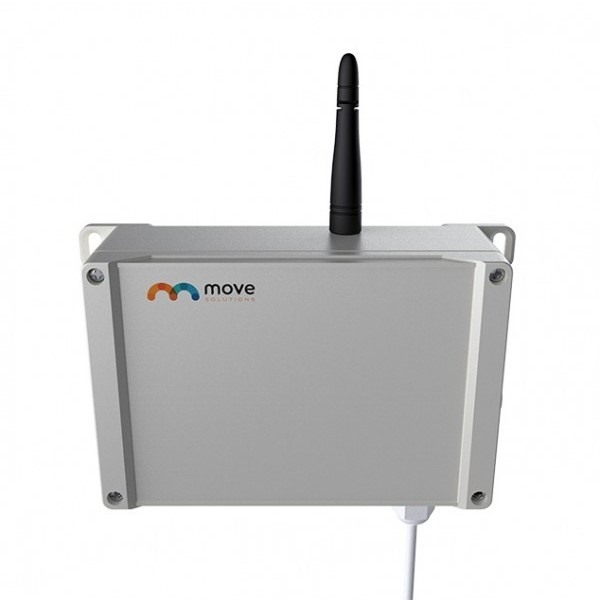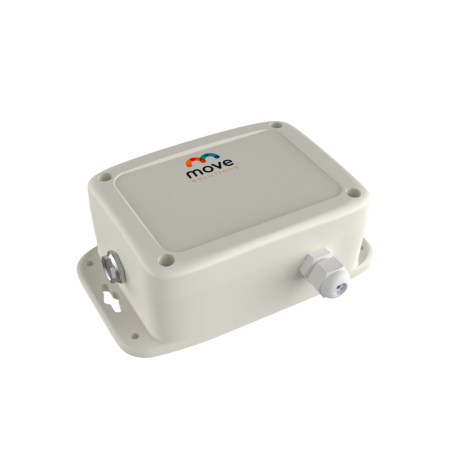Digital Communication Node
The Digital Communication Node is a device that enables all connected sensors (originally wired) for LoRaWAN wireless communication. The Digital Node is compatible with all geotechnical sensors that use the Modbus RTU communication protocol.
Digital Communication Node
The Digital Communication Node is a device that enables all connected sensors (originally wired) for LoRaWAN wireless communication. The Digital Node is compatible with all geotechnical sensors using the Modbus RTU communication protocol. Once the sensors are connected to this wireless device and the Gateways are properly installed on-site, they are ready to receive, store, and send data. You can freely configure the Digital Node and all connected sensors remotely using the Move Cloud Platform. Perfect for implementing any monitoring system and meeting all project requirements.
Once the sensors are connected to this wireless device and the Gateways are properly installed on-site, they are ready to receive, store, and send data. You can freely configure the Digital Node and all connected sensors remotely using the Move Cloud Platform. Perfect for implementing any monitoring system and meeting all project requirements.
Key Parameters:
- A wireless device with a built-in long-life battery
- Enables LoRaWAN wireless communication for any wired sensor
- Supports 1 BUS, up to 30 sensors
- The sampling frequency can be adjusted remotely
- Supports all Modbus - RS485 sensors
- Extremely easy installation with versatile mounting options
Main Applications of the Digital Communication Node
|
|
|
|
Structural MonitoringUsing crack gauges allows you to keep dangerous crack patterns under control. You can also monitor the stress-strain state of structural elements using strain bands and correlating data with temperature. |
Geotechnical MonitoringBy inserting load and pressure cells into the ground, you can monitor both the pressures exerted by the soil and the distribution of loads on foundations and their deformations. |
Compatible Sensors
Some of the geotechnical sensors and probes with Modbus interface compatible with the Digital Communication Node:
- In-situ inclinometer
- Inclinometer chain
- Crack gauge
- Load cell
- Moisture sensor
- Inclinometer
- Settlement gauge
- Deformation gauge
- Piezometer
Easy Installation of the Move Wireless Monitoring System
The installation of a complete wireless sensor system on-site is quick and straightforward: simply mount each device with at least two screws on the structure you wish to monitor and power the LoRaWAN gateway. You can configure the entire system remotely, before, during, or after installation, using your laptop or tablet. After mounting and configuration, the Move wireless monitoring system will start measuring, and you can begin remote monitoring.
Operation of the Move Wireless Monitoring System
The wireless sensor system automatically communicates measurement data via LoRaWAN with the on-site gateway, which then sends the received data via 4G or LTE to online servers. The Move Cloud Platform is the cloud-based web tool that allows you to access, view, and export your measurement data and configure the settings of the entire sensor system. You can access the Move Cloud Platform 24/7 from anywhere or any device in the world. One of the main advantages of the Move Cloud Platform is that it offers remote access to measurement data and allows the remote configuration of all installed sensors. This saves time and labor. Additionally, you can analyze measurement data using processing algorithms included in the service. Perform calculations, correlations, and complex analyses automatically and effortlessly. With just a click, you can export measurement data in CSV format. You can also easily set up alerts for multiple recipients to receive email notifications for threshold breaches.
- Easily install the entire system on the structure without wiring.
- Quickly configure all wireless sensors remotely.
- View measurement data in real-time wherever you are, on any device, 24/7.
- Process collected data using the implemented algorithms.
- Continuously monitor the operating status and signal quality of the system remotely.
- Customize alarm notifications and receive overload alerts via email.
- Optionally, you can integrate the data into your platform via MQTT bridge, FTP, or API calls.
You might also like
















